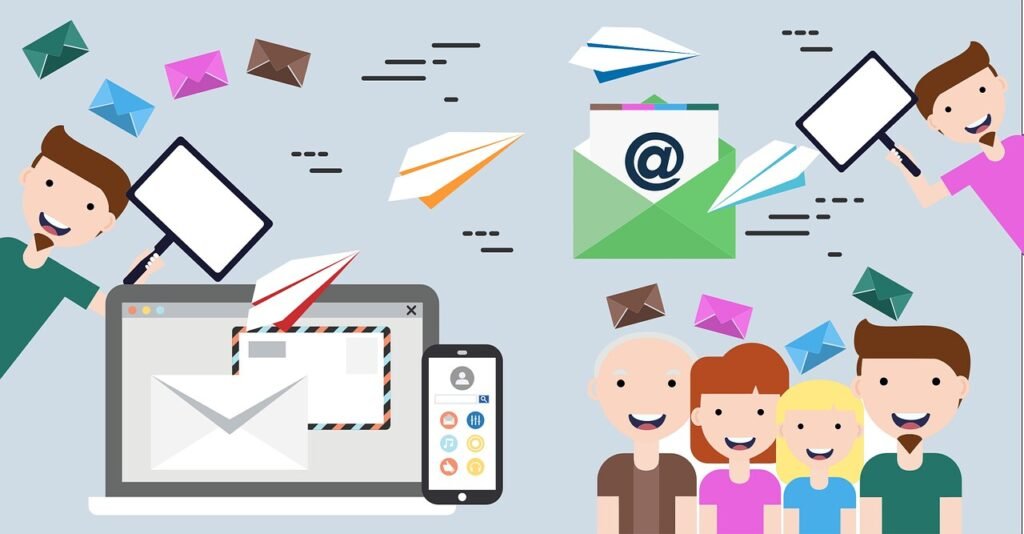A/B testing has become one of the most valuable tools in modern marketing, helping businesses understand what works best to drive engagement, conversions, and overall growth. However, A/B testing can also be seen as resource-intensive, requiring time, tools, and data that might seem out of reach for companies with limited resources. But even on a budget, A/B testing can be an incredibly effective way to optimize your business processes, website, and marketing campaigns.
In this blueprint, we’ll cover everything a CEO needs to know to run impactful A/B tests on limited resources, from setting up efficient test frameworks to making data-driven decisions that maximize results. This guide will keep it simple, practical, and focused on high-impact tactics that work without a hefty price tag.
Why A/B Testing is Essential for Growth
A/B testing, or split testing, involves comparing two variations of a particular element—such as an email subject line, landing page layout, or call-to-action button—to see which performs better. By measuring the impact of these changes, you gain valuable insights into what resonates with your audience, helping you make more informed decisions.
For companies with limited resources, A/B testing is especially useful because it enables you to improve performance without guessing. Every adjustment is based on real user behavior, leading to better outcomes and ensuring you invest time and resources in strategies that actually work.
Step 1: Identifying High-Impact Areas for A/B Testing
Focus on Elements with the Greatest Potential for Change
A limited budget requires you to be strategic about what you test. Instead of testing everything, focus on elements that are most likely to impact your bottom line. These often include your website’s main pages, email subject lines, call-to-action (CTA) buttons, and ad copy.
For example, if your website has high traffic but low conversions, focusing on optimizing your homepage or product pages through A/B testing can lead to immediate improvements. Likewise, if you’re seeing low open rates on emails, testing subject lines or preview text could be a high-impact area.
Use Data to Guide Your Priorities
Start by reviewing your analytics to identify areas with low engagement or high drop-off rates. Tools like Google Analytics (which is free) allow you to see which pages have high bounce rates or low conversion rates. These metrics reveal opportunities for A/B testing by showing where potential improvements could drive higher engagement or more conversions.
If your data shows that a large percentage of users abandon the shopping cart, for example, focus on testing different checkout page elements. Prioritizing based on data ensures that your A/B testing efforts are targeted, maximizing results with the least amount of time and resources.
Step 2: Choosing a Simple, Low-Cost Testing Tool

Free and Affordable A/B Testing Tools
You don’t need expensive software to run effective A/B tests. Free or budget-friendly tools offer many essential features that allow you to set up and track A/B tests without needing a large team or advanced technical skills. Some options include:
- Google Optimize: A free tool from Google, Google Optimize integrates with Google Analytics and allows you to run A/B tests on your website. It’s ideal for small businesses that already use Google Analytics and want to test different layouts, messaging, or CTAs.
- Mailchimp: If you’re focused on email marketing, Mailchimp offers A/B testing capabilities for subject lines, email content, and send times. This tool is particularly useful for testing email performance without a dedicated email marketing budget.
- Optimizely and VWO (Visual Website Optimizer): These are paid tools but offer free trials. They’re helpful if you need to test multiple elements and want additional features for in-depth insights.
These tools are intuitive and offer basic A/B testing features that allow you to gather actionable data, even on a limited budget.
Start with One Variable at a Time
When working with limited resources, keep your tests simple by focusing on one variable at a time. Testing one variable ensures that any changes in performance are directly related to that specific element, making it easier to interpret results. For instance, if you’re testing an email subject line, keep everything else in the email the same. If you’re testing a call-to-action button, don’t change other elements on the page.
Single-variable tests are less resource-intensive, faster to set up, and easier to analyze. Over time, you can layer in more tests, building on your findings to gradually refine and optimize your strategy.
Step 3: Designing an Effective A/B Test

Clearly Define Your Hypothesis and Goals
A well-defined hypothesis is the foundation of a successful A/B test. It’s simply a clear statement of what you believe will happen if you change a particular element. For example, a hypothesis might be: “If we change the CTA button from ‘Sign Up Now’ to ‘Get Started Today,’ we’ll see a higher conversion rate on the landing page.”
Once you have a hypothesis, define your primary goal for the test. Goals could include increasing click-through rates, improving conversions, or lowering bounce rates. Being clear on your goals helps you stay focused, ensuring your test results are meaningful and actionable.
Set a Reasonable Timeline Based on Traffic
The duration of your A/B test should depend on how much traffic you receive. Low-traffic sites may need longer to gather enough data for a conclusive result, while high-traffic sites can achieve statistical significance more quickly. A good rule of thumb is to run your test for at least one to two weeks to account for any variations in user behavior.
If you’re testing email performance, wait until you have a large enough sample size to compare results reliably. For example, if you send emails weekly, you might need to test over multiple sends to get a true picture of what works best. Allowing adequate time for your test ensures your results are accurate and not skewed by short-term anomalies.
Randomly Split Your Audience
In A/B testing, it’s essential to randomly assign users to each variation to avoid bias. Fortunately, most A/B testing tools, like Google Optimize or Mailchimp, handle randomization automatically. By ensuring each group is representative, you can trust that the differences in results are due to the changes you’re testing, not some other factor.
For email testing, you can use list segmentation to split your subscribers randomly. Just be sure that both groups are similar in terms of demographics and engagement level to maintain consistent test conditions.

Related: Check out our free SEO suite

Step 4: Monitoring and Analyzing Results
Track Your Key Metrics
As your test runs, closely monitor the metrics related to your primary goal. If you’re testing a landing page, metrics like conversion rate, time on page, and bounce rate are crucial. If it’s an email subject line, pay attention to open rates, click-through rates, and unsubscribes.
Most testing tools provide data visualizations and reports that make it easy to see which variation performs better. However, don’t make any decisions until the test is complete—changing things midway through can skew your results and lead to inconclusive findings.
Check for Statistical Significance
Statistical significance is a measure that indicates whether your results are likely due to the changes you made or just random chance. Many A/B testing tools will show whether a test has reached statistical significance, but as a rule of thumb, you’re looking for a confidence level of at least 95%. This means there’s a 95% chance that the observed difference is real and not due to random variation.
If your test results are not statistically significant, consider extending the test or running it again. Testing takes patience, especially on limited resources, but statistical significance is essential for making reliable decisions.
Avoid Confirmation Bias
When interpreting your results, avoid falling into the trap of confirmation bias—seeing what you want to see rather than what the data actually shows. Keep an open mind and let the data guide your conclusions. If your hypothesis is proven wrong, take it as a learning opportunity and consider what the results suggest about your audience’s preferences.
If an unexpected variation performs better than anticipated, explore why this might be. Unexpected outcomes can reveal valuable insights, helping you better understand your audience and improve future tests.
Step 5: Applying Insights and Scaling Your A/B Testing Strategy

Implement Winning Variations
Once your test is complete and you’ve identified the winning variation, it’s time to implement those changes. For instance, if a new CTA button drives higher conversions, make it the default on your website or in your emails. Immediate implementation lets you start benefiting from the results, allowing you to improve performance and drive growth right away.
However, remember that testing should be an ongoing process. After implementing a winning variation, consider whether there are other elements you could optimize further. A continuous improvement mindset will help you stay responsive to your audience’s evolving preferences and behaviors.
Document Your Findings
Documenting each A/B test, including the hypothesis, methodology, results, and insights, is essential for long-term success. This documentation creates a knowledge base for future reference, making it easier for your team to avoid testing the same elements repeatedly. Keeping detailed records allows you to see trends over time, helping you make data-driven decisions with greater accuracy.
If you run tests consistently, reviewing past results can reveal patterns and trends that offer deeper insights into what works best for your audience. This approach turns A/B testing from a one-off activity into a foundational part of your growth strategy.
Scale Your A/B Testing with a Roadmap
For long-term growth, create a roadmap of prioritized A/B tests based on your initial findings. Start with high-impact elements on your website, email campaigns, or social media, and then progressively move on to smaller, more granular elements. This roadmap allows you to allocate resources efficiently, focusing first on the tests likely to have the greatest impact.
When resources are limited, a roadmap ensures that you’re consistently working toward optimizations without wasting time on low-priority tests. As you achieve success with one test, you can invest those learnings into your next set of experiments, creating a cycle of ongoing improvement.
Tips for Sustaining A/B Testing Success on a Budget
Reuse and Repurpose Winning Elements
When you find an element that works, look for ways to repurpose it across other areas. For instance, if a CTA button performs well on your homepage, try using it in your emails or on your product pages. Reusing successful elements maximizes your return on each test and reduces the need to reinvent the wheel.
Focus on Micro-Optimizations
While big tests like page layouts or ad copy changes can drive significant results, micro-optimizations can also have a large impact when compounded over time. Testing smaller elements like button color, form field placement, or headline phrasing can lead to incremental gains that, together, boost overall performance. These tests are usually quicker and easier to set up, making them ideal for teams on a budget.
Involve Your Team for Fresh Perspectives
Involve team members from different departments in brainstorming test ideas. Your customer service team might have insights into common pain points, while sales may have ideas for messaging that resonates with prospects. Cross-department collaboration brings fresh perspectives to your testing strategy, helping you uncover areas for improvement that might otherwise go unnoticed.
Building a Culture of Continuous Testing and Improvement
To maximize the value of A/B testing over the long term, it’s beneficial to foster a culture of experimentation within your organization. When everyone understands the importance of testing and sees the value in data-driven decisions, it’s easier to integrate A/B testing as an ongoing practice rather than a one-time project.
Encourage a Mindset of Curiosity and Learning
A culture of testing begins with a mindset of curiosity. Encourage your team to view each A/B test as an opportunity to learn more about your audience, rather than just a means to achieve higher metrics. When team members are curious about what drives customer behavior, they’re more likely to propose innovative ideas and feel invested in the testing process.
Recognize and reward curiosity and effort, even if a test doesn’t produce the desired outcome. Remind your team that there’s no “failure” in testing—only learning. By reframing test outcomes as insights rather than successes or failures, you cultivate an environment where experimentation is celebrated and improvements are seen as part of a continuous journey.
Make Data Accessible to All
One of the challenges in maintaining a testing culture on limited resources is ensuring everyone has access to insights without creating additional overhead. A practical solution is to create a shared document or dashboard where test results are regularly updated and accessible to the entire team. Free tools like Google Sheets can be set up as a centralized location for test summaries, findings, and key learnings.
When data is readily available, team members from different departments can use it to make informed decisions. For instance, if the marketing team finds that a specific email subject line performs exceptionally well, sales and customer service might adapt similar language for their communications. This cross-functional sharing allows the whole company to benefit from testing insights, leading to a more cohesive, data-driven approach.
Celebrate Wins and Learn from Challenges
Every successful test is a reason to celebrate, but it’s equally important to recognize tests that didn’t yield the expected results. Share both types of outcomes openly with the team. When you celebrate wins, give credit to team members who contributed ideas and participated in the process. Recognizing their contributions reinforces a positive culture of experimentation and shows that their work directly impacts the company’s growth.
For tests that didn’t produce the expected results, hold a quick review session to discuss what was learned and how the findings can inform future tests. By treating both successes and challenges as valuable, you create a learning-focused environment where team members feel comfortable proposing new ideas, knowing they’ll be supported regardless of the outcome.
Scaling A/B Testing as Your Resources Grow

As your business grows, your resources for A/B testing may also increase. With a larger budget or team, you can gradually scale your A/B testing efforts, exploring more complex and multi-variant tests, investing in advanced tools, and even implementing personalization strategies.
Move from A/B Testing to Multi-Variant Testing
Once you have the resources to handle more complex tests, consider expanding beyond traditional A/B testing into multi-variant testing (MVT). Multi-variant testing allows you to test multiple variables simultaneously, giving you deeper insights into how different elements interact and affect user behavior.
For example, instead of just testing two different CTA buttons, MVT could allow you to test button color, placement, and text at the same time. This approach can lead to more comprehensive insights, though it requires more traffic and advanced analytics tools to ensure reliable results.
Explore Personalization as a Next Step
Another powerful way to enhance your testing strategy is to use personalization. Personalized content and experiences cater to each user’s specific preferences and behavior, often driving higher engagement and conversions. For example, you could tailor landing pages based on the traffic source or show personalized product recommendations based on past purchases.
As your resources grow, consider implementing personalization gradually. Start with simple adjustments, like personalizing email content based on user segments, and then explore more complex strategies, such as dynamic website content. Advanced A/B testing tools, like Optimizely and VWO, offer personalization features, allowing you to deliver unique experiences that meet individual user needs.
Continue Documenting and Refining Your Testing Process
As your testing capabilities expand, refine your documentation and processes to keep things organized and scalable. Create templates for test planning, reporting, and analysis so that each test follows a consistent process. Regularly update your team’s knowledge base to reflect new findings, ensuring that everyone benefits from past insights.
With a solid documentation process in place, your team can quickly reference what’s worked before, reducing redundant testing and focusing on fresh ideas that drive growth. A well-documented testing process is essential for scaling efficiently, allowing you to maintain quality and consistency as testing becomes a larger part of your growth strategy.
Final Thoughts: A/B Testing as a Growth Engine for Lean Teams
With the right approach, A/B testing can be a powerful growth engine—even on limited resources. By focusing on high-impact areas, using affordable tools, and keeping tests simple, you can gain valuable insights that drive measurable improvements. Remember, the key to effective A/B testing isn’t volume; it’s precision.
Start small, build on each success, and make A/B testing an ongoing part of your strategy. As you gather more data and insights, you’ll build a stronger understanding of what resonates with your audience, enabling you to make confident, data-driven decisions that fuel growth. With consistency, patience, and a commitment to continuous improvement, A/B testing can help you unlock new levels of efficiency and performance—all without breaking the bank.
READ NEXT:
- Are Vanity Metrics Killing Your Marketing Efficiency? Here’s What to Track Instead
- Pinpointing Digital Marketing ROI: Why Your Metrics Aren’t Telling the Full Story
- Unlocking Real ROI in Digital Marketing: The Hidden Costs Draining Your Budget
- How Misaligned Marketing Funnels Are Blocking Your ROI Potential
- Best Digital Marketing Agency In Santa Ana, California
- Best Digital Marketing Agency In San Francisco, California





















